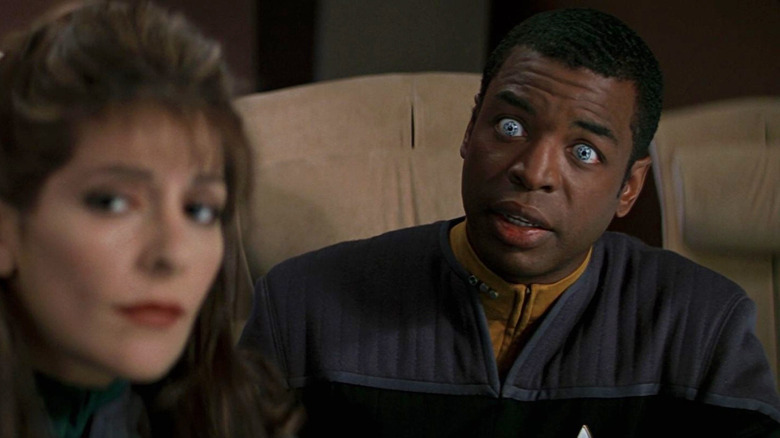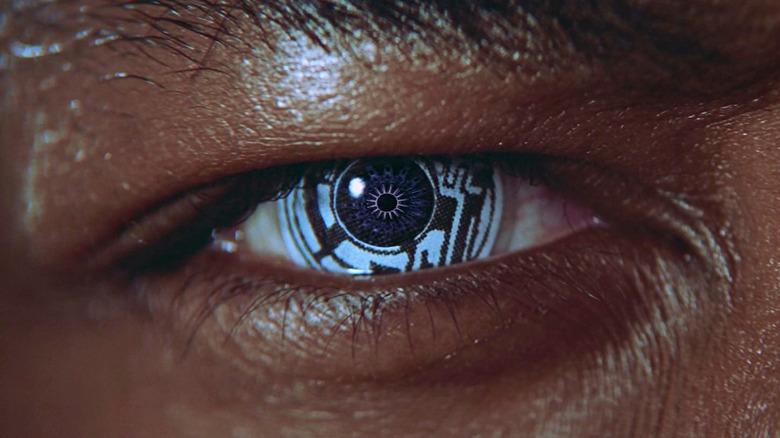All through “Star Trek: The Subsequent Technology,” the character of Geordi La Forge (LeVar Burton) wore a visor throughout his eyes. Geordi was blind and the visor allowed him to see. To briefly clarify its operation, the visor was hooked up to Geordi’s face at his temples, the place he had small mechanical implants that reached straight into the visible cortex of his mind. The visor would decide up a variety of optical info, principally based mostly on thermal patterns, and fed it straight into Geordi’s mind, bypassing his eyes. It allowed Geordi to see.
Burton needed to put on the visor on set each workday for seven years, and continued to put on it in the 1994 movie “Star Trek Generations.” Many appreciated that “Star Trek” featured a visually impaired character, however moreso that Geordi’s blindness was by no means a difficulty or a plot level. His incapacity was incidental, and that was nice.
However when the time got here to make “Star Trek: First Contact,” it was time for Geordi to get his first contacts.
Burton, you see, was bored with sporting his visor on set. In distinction to its fictional operate, the precise costume piece blocked an excessive amount of Burton’s imaginative and prescient. For “First Contact,” the filmmakers had mercy on Burton and wrote that Geordi obtained upgraded, eyeball-shaped home equipment put in. The costume visor was changed with contact lenses.
Geordi’s new mechanical eyes have been geared up with a “zoom” operate that operated like a digicam lens. A closeup of his eye confirmed that his pupils mechanically opened and closed. It was a fairly neat improve.
To attain the “eyeball zoom” impact, visible impact supervisor David Takemura required fairly easy elements. In accordance with a 2016 oral historical past in The Hollywood Reporter, he merely picked up a bathe equipment at his native Dwelling Depot.
Geordi’s first contacts
The irises of Geordi’s mechanical eyes have been merely part of Burton’s contacts. The intense closeup of his eye, nonetheless, required some particular results to attain the transferring pupils. The impact was digital, as have been a lot of the bigger visible results within the film, however the digital photographs have been scanned from a really plain piece of on a regular basis kitchen gear. Takemura defined:
“There’s a bit gag the place you see his now-bionic eyes. His bionic pupils rotating. On this high-tech, visible results world that we reside in, that was decidedly low-tech. It was really a crystal faucet bathe deal with that I discovered at Dwelling Depot. I simply took some nonetheless pictures of it and I labored with one of many compositing artists at Pacific Ocean Submit. It was simply rotating that crystal bathe faucet deal with and doing a little expansions of his iris to make it look mechanical.”
That is what we name film magic. Use no matter components are at your disposal to create outlandish, attention-grabbing visuals.
Many Trekkies will be capable to let you know that the transporter impact from the unique sequence was a movie clip of a effervescent glass of seltzer superimposed over the actors. For “Subsequent Technology,” the transporters impact was upgraded to a glass of glitter, stirred shortly and filmed in closeup.
Maybe a controversial view: “Star Trek” has at all times been higher when it was butting up towards its restricted finances. The showrunners needed to get artistic with their tales after they did not have the finances to do large, outsize sagas each week. And when it got here to high-tech, futuristic gear, they needed to discover artistic methods to repurpose current machines or construct new ones in a jiffy.
Because the Klingons say: ‘u’ Qun’a’ quvHa’moHbogh ghot quvHa’moH.
Necessity is the mom of invention.



